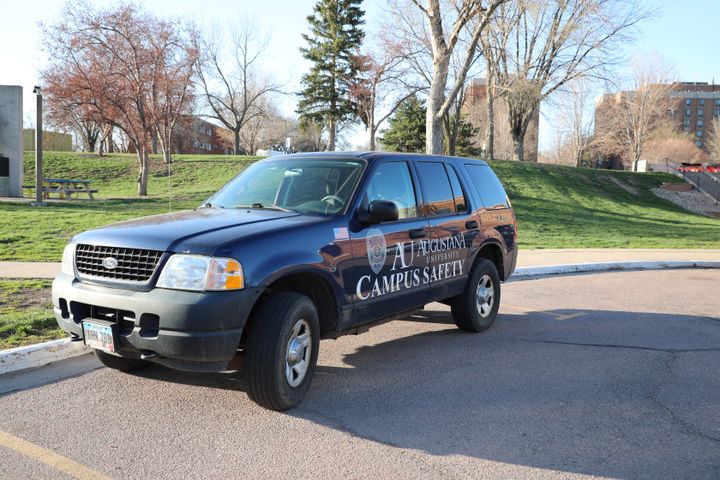SEE US seeks equal recognition
REBEKAH TUCHSCHERER

This past winter, Courtney Place had to make a decision.
A successful junior outside hitter on the Augustana volleyball team, Place sat down with friends and family to talk about the possibility of playing professional volleyball abroad after college, when she suddenly thought—“Who would care?”
According to a 20-year study of network and cable news conducted by Purdue and the University of Southern California, men’s sports dominate 96 percent of sports air time. On ESPN Sportscenter, women’s sports account for less than 2 percent of overall coverage.
The study also found that air time for women’s sports is on the decline, with network affiliates dedicating 6.3 percent of air time to women in 2004 and only 1.6 percent in 2009.
But Place hopes to change that.
SEE US, a movement started by Place and the Augustana volleyball team to spread awareness about female athletes being underrepresented, sexualized and judged based on appearance rather than ability, has slowly to spread across campus and to women’s collegiate teams in the Midwest.
Place began the movement by creating accounts on Instagram, Twitter and Facebook, using the handle @SEEUSmovement and #SEEUS. In two months, the Twitter page amassed 294 followers, and the Instagram page gained 550, including WNBA Minnesota Lynx point guard Lindsay Whalen.
“In high school, crowds would chant ‘she’s a man’ or ‘where’s your dick?’ at me,” Place said. “In college, [volleyball players] hear all the time ‘we only come for the Spandex.’ I thought that it was just me that went through it, but when I started to talk with teammates about it, they had gone through similar things with body image.”
While the movement originated with the volleyball team, the Augustana women’s basketball, soccer, tennis, golf and softball teams jumped on board, as have female athletes from other NSIC conference teams, including Southern Minnesota State University, Winona State University and St. Cloud University.
To spread awareness, Place designed apparel, stickers, mugs and wristbands for the movement and is selling them at teespring.com with all proceeds donated to the Women’s Sports Foundation, an organization dedicated to creating leaders by ensuring girls access to sports.
“People think that, in general, men are stronger and more fun to watch,” Place said. “I think that’s unfair, because people think they’re physically stronger, they’re going to be more fun to watch. [Female athletes] work just as hard, and should be recognized equally.”
Place also noted a lack of support for women’s sports teams on Augustana’s own campus, citing the low attendance numbers at women’s basketball games despite a 29-4 season record.
Head volleyball coach Jennifer Jacobs, an advocate for the SEE US movement, said that the judgement based on gender also crosses over from women athletes to women coaches.
“I’ve been a strong proponent of women coaching women,” Jacobs said. “Not because men cannot, but because I believe it is imperative for young women athletes to see women in leadership positions. It can be a catch-22, though, as I’ve seen women coaches make the same mistakes men have made in coaching environments and [women] are judged more harshly or afforded less room for errors.”
Shannon Petersen, a junior catcher and infielder for the softball team, was one of the first people that Place approached as she contacted women athletes on campus.
“My job has been spreading the word and telling people about everything,” Petersen said. “I have a couple friends from other teams in the conference and have spread the word to them, and they’ve spread it to their teammates, as well.”
Place said that this summer, those involved with SEE US will be hosting a fun race to raise awareness for women in sports, in addition to visiting high schools, hosting meetings with women athletes on campus and ensuring that women athletes support each other across sports.
“It should be a conversation,” Place said. “I think that everybody’s afraid to talk about it, but there have been men’s teams here that are going to buy apparel. It’s not just for women—it’s for everybody we know.”



